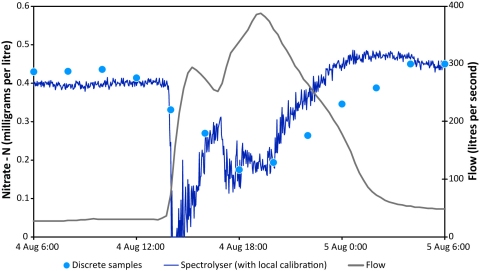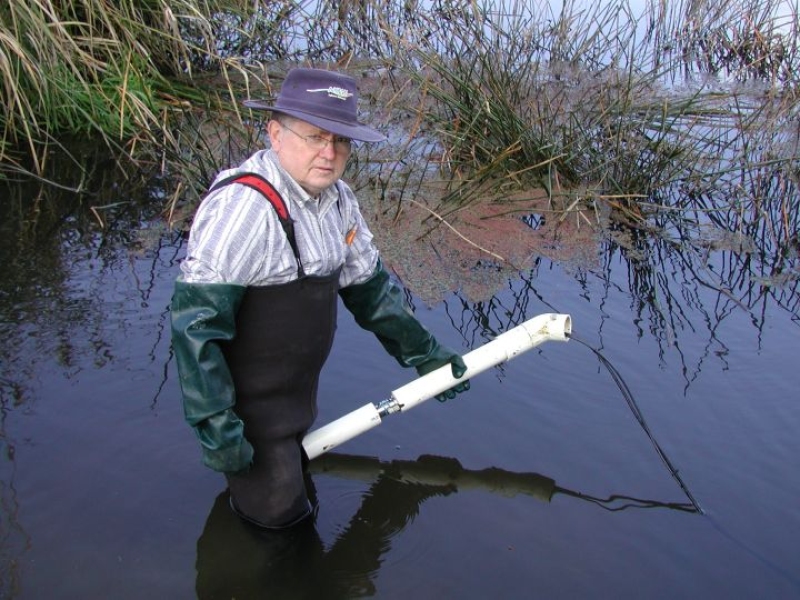NIWA has invested in a new tool which continuously monitors a range of water quality parameters and delivers real-time data. Already we have some new revelations about the way diffuse pollutants move into watercourses.
Until recently we’ve been limited to continuous monitoring of individual parameters such as turbidity and temperature. Recently we have purchased two S::CAN Spectrolysers, and we’ve been able to expand this list.
The spectrolysers are capable of measuring a range of water quality variables continuously, on-site and in real time. They are able to rapidly scan liquid samples over the UV and visible light (200-700 nm) spectrums, at high resolution and can quantify a range of variables including: • nitrate • turbidity • organic carbon • bacterial and chemical oxygen demand • volatile organic compounds.
Sample intervals as low as two minutes are possible, and the data arrives in the office within minutes via mobile broadband.
Nitrate inflows into Lake Okaro wetland
We have been testing the spectrolysers at the Lake Okaro constructed wetland near Rotorua. Data collected over six months, at two-minute intervals, from the wetland inlet and outlet, have revealed some interesting trends that we hadn’t been able to see in conventionally collected water quality data.
For example, in winter nitrate concentrations fall quickly and dramatically at the start of storm events (over six minutes) at the wetland inflow, and then slowly (over hours) rise to peak after the peak flow. So this high frequency data suggests that water containing low nitrate concentrations enters the wetland at the start of a storm, while water with higher nitrate concentrations enters the wetland in the latter stages of storms.

Spectrolyser (blue line) and laboratory (blue dots) nitrate concentrations and water flow during a small storm in August 2010 at the Lake Okaro wetland inlet.
Already these results demonstrate that higher frequency monitoring will lead to new insights regarding the sources and transport of diffuse pollutants.
Future projects tagged for the spectrolysers include installation at several National River Water Quality Network sites and more investigations on agricultural streams and wetlands.
Contacts: Dr Lucy McKergow or Dr Neale Hudson

